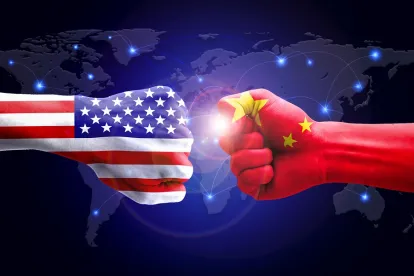The White House has just released a fact sheet and the Section 301 report of the U.S. Trade Representative (USTR) on Chinese unfair trade practices. The report details USTR’s findings that China has required U.S. companies to transfer their technology to Chinese competitors and otherwise harmed U.S. intellectual property rights holders and U.S. companies seeking to invest in China.
Based on the findings in the Section 301 report, the president has directed that:
-
USTR propose additional tariffs on imports of products “supported by China’s unfair industrial policy;”
-
USTR file a World Trade Organization dispute settlement proceeding against China’s technology licensing practices; and
-
The U.S. Treasury Department propose restrictions on Chinese investment in “sensitive U.S. technology.”
The proposed tariffs will be 25 percent (on top of any existing customs duties and antidumping and countervailing duties). The general sectors for retaliation against China will include aerospace, information communication technology, and machinery. However, the specific Chinese products to be targeted have not yet been decided. President Trump is instructing USTR to publish a “proposed” tariff retaliation list within 15 days. Reportedly, the tariffs will not be imposed until after a 60-day notice and comment period. After that period, a final list of Chinese goods will be identified for tariffs.
According to testimony yesterday by Amb. Robert Lighthizer at the House Ways & Means Committee, the administration is using an algorithm to determine how to impose tariffs by minimizing downstream impact and harm for consumers and maximizing pressure on Beijing.
The White House fact sheet does not provide details of the content of the ordered WTO complaint against China’s discriminatory technology licensing practices. Presumably, based on the Section 301 report, the challenged practices will include forced transfers of technology and technical know-how from U.S. investors in China to their mandatory Chinese joint venture partners and Chinese competitors. If the U.S. is successful in its WTO case, and China refuses to withdraw the challenged measures, the United States could impose additional retaliatory tariffs on imports from China.
Finally, the president has directed the Treasury Department to come up with recommendations to impose additional restrictions on Chinese investment in sensitive U.S. technology within 60 days (i.e., by May 21, 2018). This directive is notable for two reasons.
-
It requires Treasury (which oversees the existing Committee on Foreign Investment in the United States (CFIUS) process for reviewing Chinese (and other foreign) investment in the United States) to come up with measures that go outside the existing CFIUS authority to review Chinese investments. Conceivably, this could extend beyond simply reviewing and blocking in-bound investments in existing U.S. businesses (as CFIUS currently does) to cover:
-
Tie-ups between U.S. and Chinese companies and investors outside the United States.
-
Proposed investments by U.S. companies in China where there is a risk that Chinese companies would gain access to U.S. technology as a result of the investment.
-
-
By not defining “sensitive U.S. technology,” the directive gives Treasury leeway to cover transactions in consumer items and a host of other products and technologies that are typically not seen as critical to U.S. national defense, but that do play a role in ensuring the competitive technological edge of U.S. companies in a wide range of industries.
Companies with an interest in the products identified for additional tariffs (aerospace, information communication technology, and machinery), as well as those companies and investors that have interests in China or may be contemplating potential tie-ups or investments with Chinese companies, should closely monitor developments in this case, consider commenting on the USTR and Treasury proposals, and take other steps to protect their interests.






 />i
/>i

